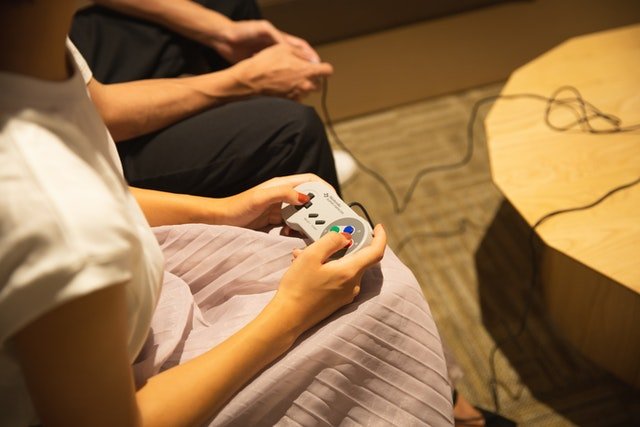A Captivating History Of Video Consoles
Since the days of Pong and Pac-Man, video games have come a long way. High-quality 3D games may now be played in the privacy and convenience of our own homes like we access NFL predictions everywhere.
Most of the time, we don’t pay attention to the minute adjustments that were made over time to bring each system to its current state.
Because of the tremendous competition between video game console manufacturers, we now have high-quality games to play.
In the following part, you’ll learn how fascinating it is to track the evolution of video game systems. More than 70 different gaming consoles are currently on the market.

Generation 1 (1967 – 1975)
Many other gaming consoles attempted to capture the attention of gamers all over the world before Nintendo, Sony, and Microsoft. Arcade cabinets and home systems that could only play Pong were the norms during this period.
Contrary to popular belief, video games on consoles didn’t debut until the 1980s. To describe his “Brown Box” console, Ralph Baer coined the term in the 1960s.
The Magnavox system was subsequently developed for the commercial market by Magnavox. Plastic overlays were put on TV displays to compensate for the lackluster images.
The video consoles we enjoy now might not have been possible without this pioneering device.
Generation 3 (1981 – 1985)
Generation 3 marks the beginning of the golden age of video games. Many games have been released since 1980, including PacMan, Mario Bros., and The Legend of Zelda. It’s timeless like real NFL picks.
The Sega Master System versus the Nintendo Entertainment System was the first real video consoles war (1983)
The Atari 2600 is a favorite of many people. On September 11, 1977, it was released. For many, this is the norm. The first American video gaming system was modeled after an early personal computer from the 1970s.
To the untrained eye, the Atari 2600 appeared carved from wood. The back had a strong, angular ridge and a grill-shaped plastic top.
This gadget seems more like an antique, spooky digital alarm clock than anything else. That’s why it worked so well in the 1970s’ dens, which had wood paneling and luxurious carpeting.
1986 – 1990
Both Nintendo and Sega have developed new platforms to counter the other’s dominance in the gaming industry. The Mega Drive/Genesis, released in 1988, was Sega’s best-selling console.
The Super Nintendo Entertainment System (SNES) was released two years later to respond to the risk. The SNES was the next generation of home video game consoles after the NES.
The Master System II was released in the same year as the Mega Drive/Genesis. When it came to the 1980s console war, this was the most significant one.
Although Atari attempted again with its most recent system, the Atari 7800, the company’s share in the console market was steadily decreasing. Because it was backward compatible, the fantastic Atari 2600 could be used to play classic games from the past.
1994-1997
It wasn’t until 1994 that Sony’s Playstation came out that Sega and Nintendo had new competition.
The finest three consoles of this generation were the Sega Saturn, Nintendo 64, and Sony Playstation. Because CD drives were introduced in this generation, it was unique.
The Sony PlayStation was the only video game console available in 1995. More than 7 million copies had been sold by 1996. Because of the platform’s CD-ROM capabilities, 3D graphics and more complex gameplay were made possible.
That’s how hugely popular franchises like Gran Turismo and Resident Evil became.
1998 – 2004
The next generation Sega Dreamcast was created in response to Sega Saturn’s lack of success (1998). The Dreamcast was the first console in 1998 to allow players to play games online via a built-in modem and Internet connection.
Two years later, Sony released the Playstation 2. Nintendo released the GameCube DVD-ROM console in 2001, replacing the cartridge-based Nintendo 64.
A well-received Xbox and an online service called Xbox Live were Microsoft’s entry into the video game console market in 2001.
2005-2011
While the top three console manufacturers remained competitive during this generation, the platforms changed significantly.
Nintendo came up with a family-friendly console during the Sony-Xbox competition. The Wii allowed users to play games by moving their bodies instead of using buttons and joysticks.
Sony created the PS3 to compete with Microsoft’s Xbox 360 system. In 2006, it was released. PlayStation Network, a free alternative to Xbox Live, was created to compete with Xbox Live.
In addition to Assassin’s Creed Rogue, Far Cry 4, and Red Dead Redemption, the platform included several popular games.
2012-current
It’s become worse this generation, like Sony, Nintendo, and Microsoft are at each other’s throats. In the beginning, it was Playstation 4, the Wii U, and Microsoft’s Xbox One.
It was an excellent year for the PlayStation 4 and Xbox One. Since then, the PlayStation 4 Pro, the Xbox One S, and Nintendo’s second attempt at the Wii U were all re-released as the generation progressed.
Keeping in mind that PC games have continuously evolved like NFL expert picks and improved is vital. The Playstation 5, Xbox Series X, and several Virtual Reality technologies are being developed.



